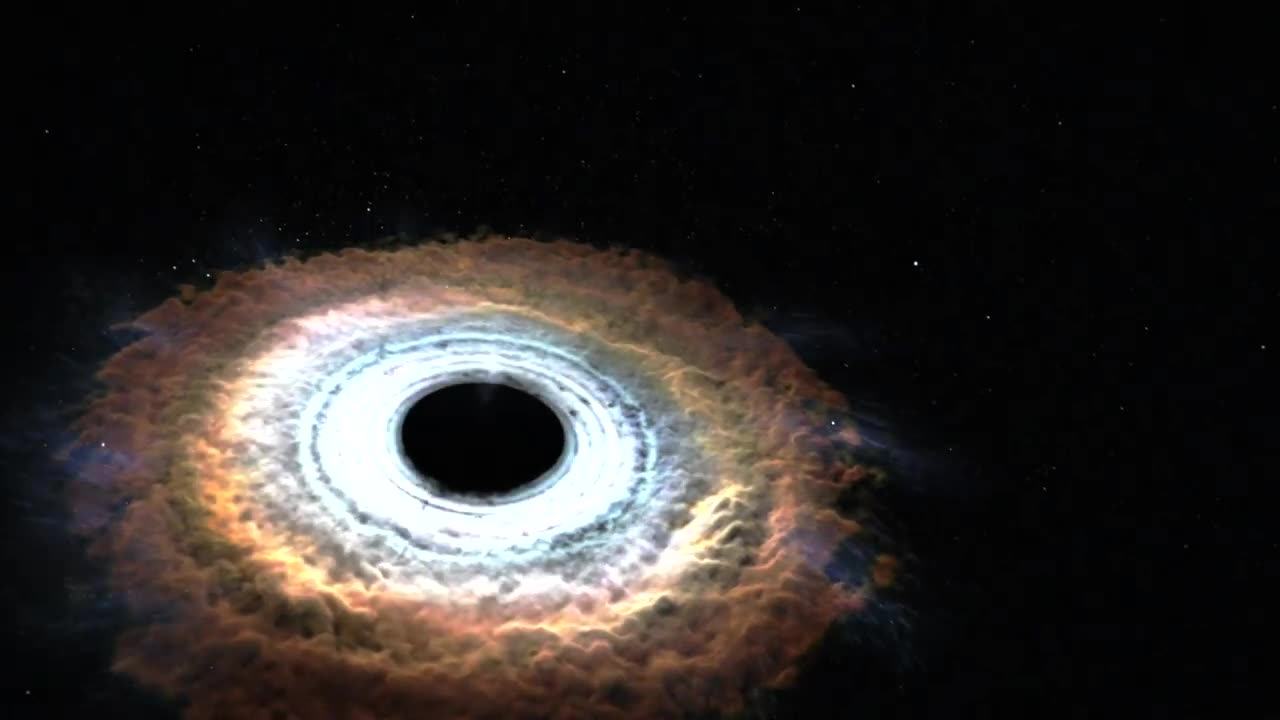Premium Only Content

Massive Black Hole Shreds Passing Star
This artist's depiction illustrates recent discoveries involving a star that met its demise when it ventured too close to a voracious black hole. The relentless gravitational forces of the black hole tore the star apart in a dramatic event known as a "tidal disruption." During these occurrences, termed "tidal disruptions," fragments of the shattered star are ejected outward at incredible velocities, while the remainder is drawn inexorably toward the black hole's grasp. This dynamic process gives rise to a distinctive X-ray flare that can endure for several years.
NASA's Chandra X-ray Observatory, Swift Gamma-ray Burst Explorer, and ESA/NASA's XMM-Newton instruments contributed various components to the comprehensive study of this celestial phenomenon, which bears the name ASASSN-14li. This tidal disruption event was first identified through optical observations by the All-Sky Automated Survey for Supernovae (ASAS-SN) in November 2014. ASASSN-14li unfolded in proximity to a supermassive black hole estimated to possess a mass several million times that of the sun, located at the heart of the galaxy PGC 043234, positioned approximately 290 million light-years away. Astronomers aspire to uncover additional events akin to ASASSN-14li, providing opportunities to assess theoretical models elucidating the impact of black holes on their surroundings.
Throughout the tidal disruption event, slender tendrils containing a substantial portion of the star's mass gravitate toward the black hole. Gradually, these gaseous filaments coalesce into a sleek, scorching disk that radiates brilliantly in X-rays. As the disk takes shape, its central region becomes intensely heated, instigating a material outflow referred to as a "wind" emanating from the disk's core.
-
 LIVE
LIVE
SpartakusLIVE
5 hours ago#1 Saturday Spartoons on RUMBLE PREMIUM
8,881 watching -
 LIVE
LIVE
Man in America
5 hours ago“Summoning the Demon” — The AI Agenda Is FAR WORSE Than We Know w/ Kay Rubacek
799 watching -
 LIVE
LIVE
Tundra Tactical
4 hours ago🎯💥 The World’s Okayest Gun Show 🔫😂 | LIVE Tonight on Rumble!
265 watching -
 LIVE
LIVE
Mally_Mouse
23 hours ago🌶️ 🥵Spicy BITE Saturday!! 🥵🌶️- Let's Play: Tower Unite!
435 watching -
 58:59
58:59
MattMorseTV
3 hours ago $0.76 earned🔴Trump just BROKE Newsom.🔴
32.4K34 -
 18:14
18:14
Her Patriot Voice
4 hours agoWho Is WORSE for NYC: Trump Girl or Socialist?
10K21 -
 LIVE
LIVE
SavageJayGatsby
3 hours agoSpicy Saturday with Mally! | Road to 100 | $300 Weekly Goal for Spicy Bites!
1,130 watching -
 LIVE
LIVE
FomoTV
5 hours ago🚨 Swamp Theater: FBI Raids Bolton 🕵 Still NO Epstein Files, Trump's Troops & the Red Heifer Hoax 🐂 | Fomocast 08.23.25
73 watching -
 6:04:40
6:04:40
Akademiks
8 hours agoRoc Nation & Meg Thee Stallion did a 7 HOUR Deposition with me. Drake Secret Kid Finally Revealed.
45.1K1 -
 24:19
24:19
Stephen Gardner
4 hours ago🚨BREAKING: FBI Raid of John Bolton’s House Reveals THIS!
47.4K108